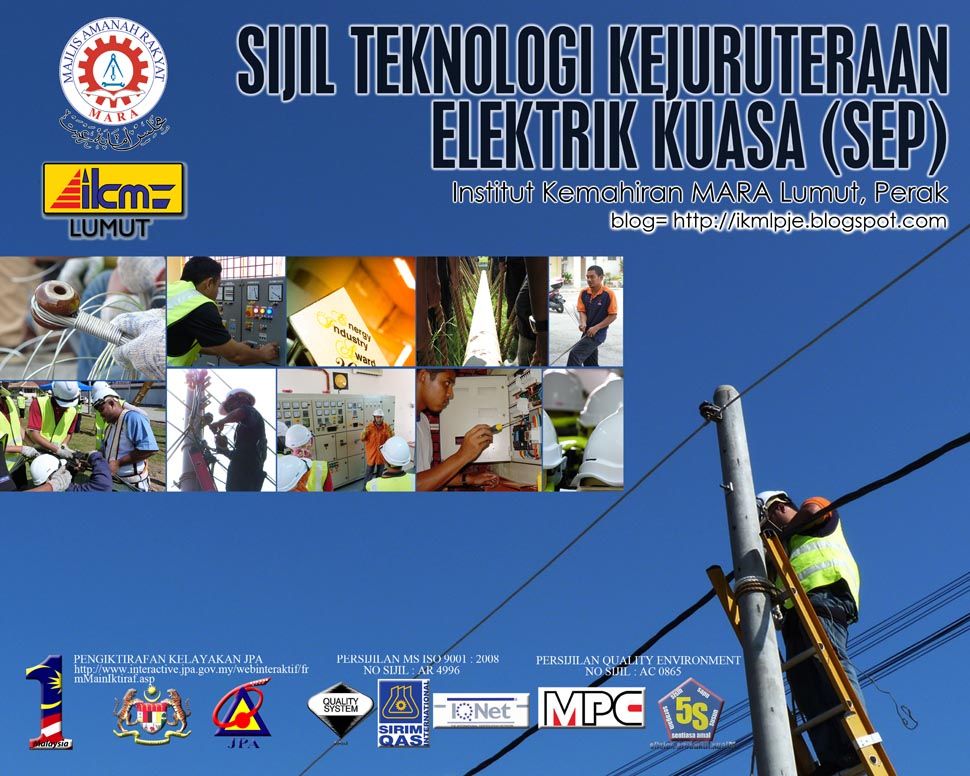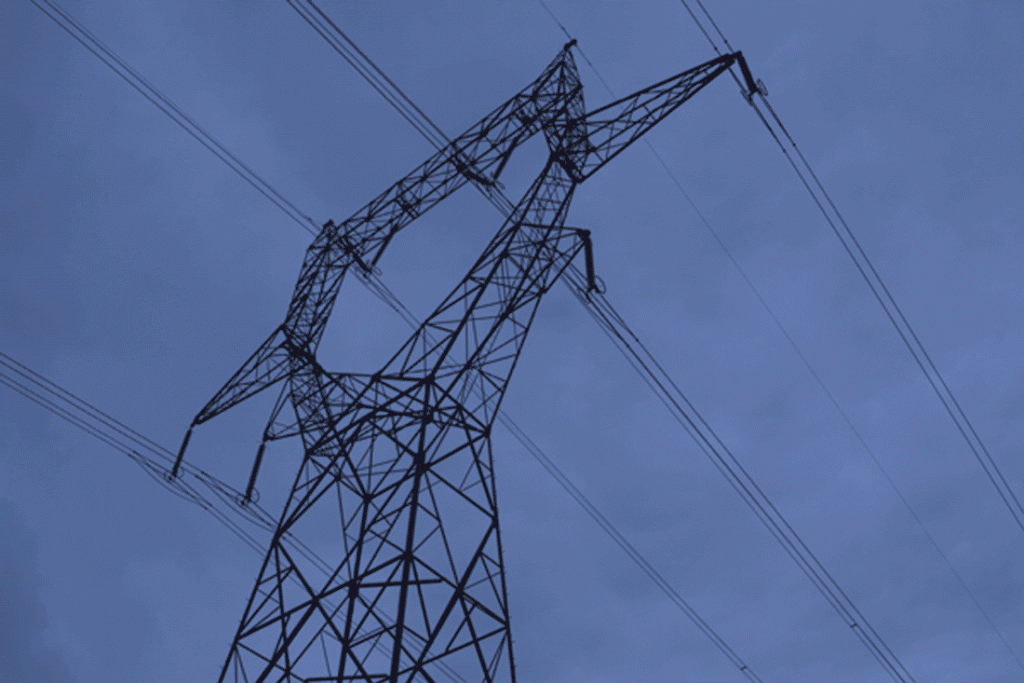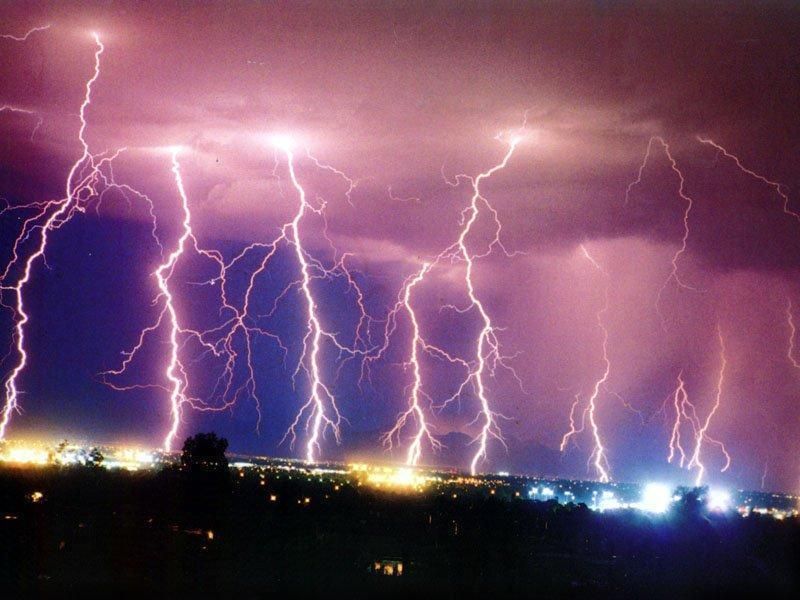Sukar memahami artikel dalam Bahasa Inggeris? Terjemah di Google Translate
The electric energy (electrical energy, electricity) is the potential
energy associated with the conservative Coulomb forces between charged
particles contained within a system, where the reference potential
energy is usually chosen to be zero for particles at infinite
separation.
The movement of electric charge is known as an electric current, and intensity of which is usually measured in amperes. Current can consist of any moving charged particles - most commonly these are electrons, but any charge in motion constitutes a current.
The energy sources we use to make electricity can be renewable or non-renewable, but electricity itself is neither renewable or non-renewable.
A generator is a device that converts mechanical energy into electrical energy. The process is based on the relationship between magnetism and electricity.
The cost of electricity is going up (both in dollars and in environmental and health impacts) and it doesn’t show any signs of doing otherwise. About half of the energy in the American grid is coal generated.
The movement of electric charge is known as an electric current, and intensity of which is usually measured in amperes. Current can consist of any moving charged particles - most commonly these are electrons, but any charge in motion constitutes a current.
The energy sources we use to make electricity can be renewable or non-renewable, but electricity itself is neither renewable or non-renewable.
A generator is a device that converts mechanical energy into electrical energy. The process is based on the relationship between magnetism and electricity.
The cost of electricity is going up (both in dollars and in environmental and health impacts) and it doesn’t show any signs of doing otherwise. About half of the energy in the American grid is coal generated.
Electric energy is easily transportable via integrated electric grids. Click on picture for full size.
Electric energy is an intermediate form of energy. It is produced in
thermal power stations (where fuel oil, gas, coal, biomass, etc. are
burnt), in hydroelectric power stations and nuclear power stations.
Smaller quantities are produced by wind, photovoltaic solar panels, sea
tides, etc.
Electricity travels in closed loops, or circuits. It must have a complete path before the electrons can move. If a circuit is open, the electrons cannot flow.
When electricity was first introduced into the domestic environment it was primarily for lighting.
Electricity is an extremely flexible form of energy, and it may be adapted to a huge, and growing, number of uses.
Demand for electricity grows with great rapidity as a nation modernises and its economy develops. The United States showed a 12% increase in demand during each year of the first three decades of the twentieth century.
In the late-1800s, Nikola Tesla pioneered the generation, transmission, and use of alternating current (AC) electricity, which can be transmitted over much greater distances than direct current. Tesla's inventions used electricity to bring indoor lighting to our homes and to power industrial machines.
Electricity is a general term that encompasses a variety of phenomena resulting from the presence and flow of electric charge.
Before electricity generation began over 100 years ago, houses were lit with kerosene lamps, food was cooled in iceboxes, and rooms were warmed by wood-burning or coal-burning stoves.
Electricity travels in closed loops, or circuits. It must have a complete path before the electrons can move. If a circuit is open, the electrons cannot flow.
When electricity was first introduced into the domestic environment it was primarily for lighting.
Electricity is an extremely flexible form of energy, and it may be adapted to a huge, and growing, number of uses.
Demand for electricity grows with great rapidity as a nation modernises and its economy develops. The United States showed a 12% increase in demand during each year of the first three decades of the twentieth century.
In the late-1800s, Nikola Tesla pioneered the generation, transmission, and use of alternating current (AC) electricity, which can be transmitted over much greater distances than direct current. Tesla's inventions used electricity to bring indoor lighting to our homes and to power industrial machines.
Electricity is a general term that encompasses a variety of phenomena resulting from the presence and flow of electric charge.
Before electricity generation began over 100 years ago, houses were lit with kerosene lamps, food was cooled in iceboxes, and rooms were warmed by wood-burning or coal-burning stoves.
Lightning is aprominent manifestation of natural electricity. Click on picture for full size.
The fact that electricity can’t be easily stored means that production
must be fine-tuned to consumption levels on a short term basis.
Electric energy is easily transportable via integrated electric grids. After transportation, electric energy is converted into mechanical energy, thermal energy, light energy, chemical energy, etc.
Demand for solar electric energy has consistently grown by 20-25% per year over the past 20 years.
A battery produces electricity using two different metals in a chemical solution. A chemical reaction between the metals and the chemicals frees more electrons in one metal than in the other.
There are several advantages and disadvantages to hydro electric energy production. One big advantage is that energy is free once the dam is built.
In 1882 water was used to electrify two paper mills and a house on the Fox River. This was the first application of hydro electric energy.
Electricity is by no means a purely human invention, and may be observed in several forms in nature, a prominent manifestation of which is lightning.
In 1791 Luigi Galvani published his discovery of bioelectricity, demonstrating that electricity was the medium by which nerve cells passed signals to the muscles.
Electric energy is easily transportable via integrated electric grids. After transportation, electric energy is converted into mechanical energy, thermal energy, light energy, chemical energy, etc.
Demand for solar electric energy has consistently grown by 20-25% per year over the past 20 years.
A battery produces electricity using two different metals in a chemical solution. A chemical reaction between the metals and the chemicals frees more electrons in one metal than in the other.
There are several advantages and disadvantages to hydro electric energy production. One big advantage is that energy is free once the dam is built.
In 1882 water was used to electrify two paper mills and a house on the Fox River. This was the first application of hydro electric energy.
Electricity is by no means a purely human invention, and may be observed in several forms in nature, a prominent manifestation of which is lightning.
In 1791 Luigi Galvani published his discovery of bioelectricity, demonstrating that electricity was the medium by which nerve cells passed signals to the muscles.
Sumber: Interesting Energy Facts



Tiada ulasan:
Catat Ulasan